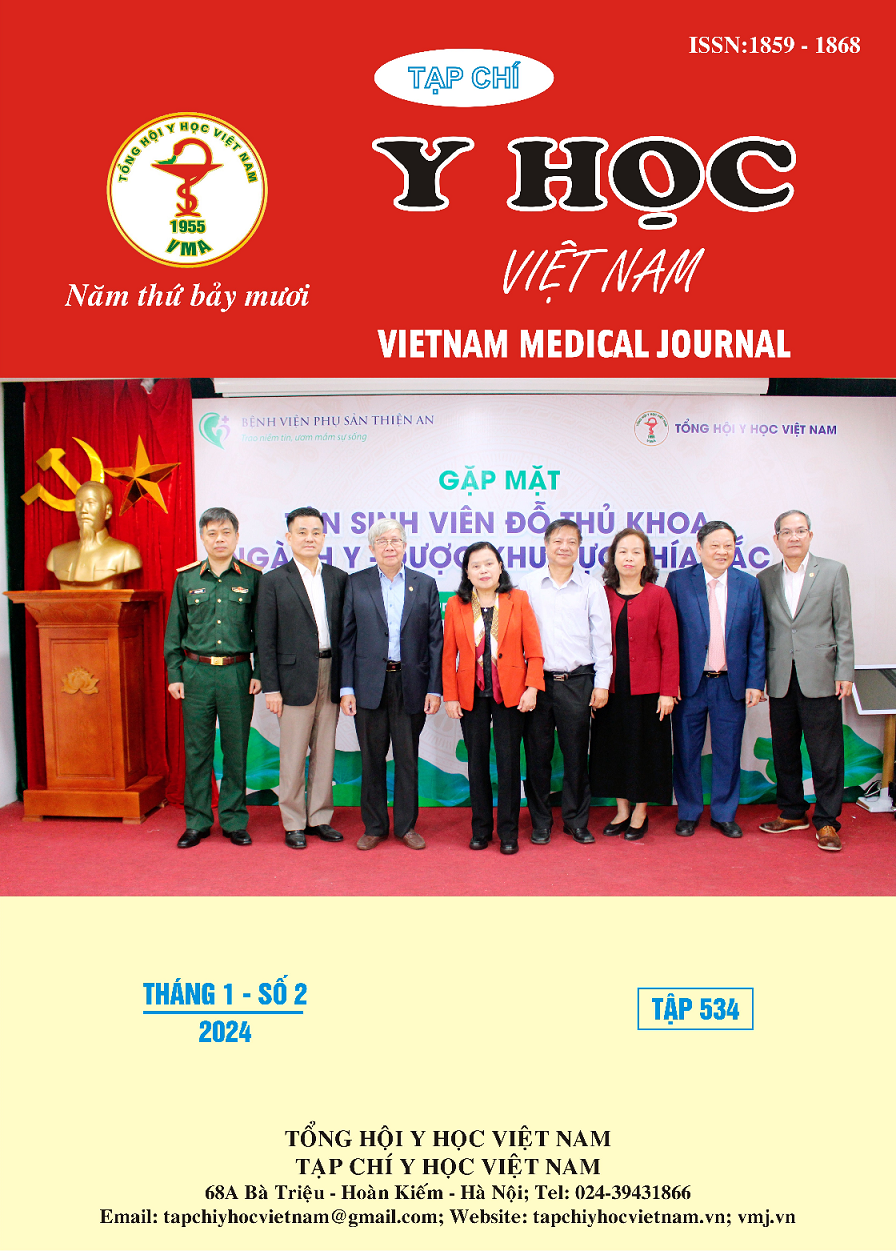SARCOPENIA AND ASSOCIATED FACTORS IN NON-DIALYSIS CKD PATIENTS
Main Article Content
Abstract
Sarcopenia is highly prevalent in patients with chronic kidney disease (CKD) and is associated with an increased risk of morbidity, mortality, and cardiovascular complications. Objective: Describe the prevalence of sarcopenia and its associated factors in non-dialysis CKD patients at Bach Mai Hospital. Method: A cross-sectional study was conducted on 156 patients diagnosed with sarcopenia according to the criteria of the Asian Working Group for Sarcopenia (2019) and CKD according to the Kidney Disease: Improving Global Outcomes (KDIGO) criteria (2012). Results: The prevalence of sarcopenia in CKD patients was 29.49%. Sarcopenia was observed in all stages of CKD, with the highest prevalence being 58.4% in stage 5 and the lowest being 13.3% in stage 1. CKD patients in stages 3b-5 had lower handgrip strength compared to those in stages 1-3a (p<0.05). Multivariate linear regression analysis showed that advanced age, anemia, and the presence of multiple comorbidities were factors associated with an increased risk of sarcopenia in CKD patients (p<0.001). Conclusion: Sarcopenia is a common condition in non-dialysis CKD patients and is present in all stages of CKD, particularly in elderly patients with severe renal impairment, anemia, and multiple comorbidities. Therefore, early diagnosis of sarcopenia in CKD patients is crucial to minimize adverse outcomes in those who have not yet initiated renal replacement therapy.
Article Details
References
2. A. J. Cruz-Jentoft, J. P. Baeyens, J. M. Bauer, et al. Sarcopenia: European consensus on definition and diagnosis: Report of the European Working Group on Sarcopenia in Older People. Age Ageing. 2010;39(4):412-423. doi:10.1093/ageing/afq034.
3. J. K. Kim, S. R. Choi, M. J. Choi, et al. Prevalence of and factors associated with sarcopenia in elderly patients with end-stage renal disease. Clin Nutr. 2014;33(1):64-68. doi:10.1016/j.clnu.2013.04.002.
4. Liang-Kung Chen, Jean Woo, Prasert Assantachai, et al. Asian Working Group for Sarcopenia: 2019 Consensus Update on Sarcopenia Diagnosis and Treatment. Journal of the American Medical Directors Association. 2020;21(3): 300-307.e302. doi: 10.1016/ j.jamda. 2019.12.012.
5. Đỗ Thị Tư. Sarcopenia và một số yếu tố liên quan ở bệnh nhân cao tuổi có bệnh thận mạn, Hanoi Medical University; 2018.
6. V. A. Souza, D. Oliveira, S. R. Barbosa, et al. Sarcopenia in patients with chronic kidney disease not yet on dialysis: Analysis of the prevalence and associated factors. PLoS One. 2017;12(4): e0176230. doi:10.1371/journal.pone.0176230.
7. R. N. Foley, C. Wang, A. Ishani, et al. Kidney function and sarcopenia in the United States general population: NHANES III. Am J Nephrol. 2007;27(3):279-286. doi:10.1159/000101827.
8. T. N. Stitt, D. Drujan, B. A. Clarke, et al. The IGF-1/PI3K/Akt pathway prevents expression of muscle atrophy-induced ubiquitin ligases by inhibiting FOXO transcription factors. Mol Cell. 2004;14(3): 395-403. doi:10.1016/s1097-2765(04)00211-4.
9. R. A. Pereira, A. C. Cordeiro, C. M. Avesani, et al. Sarcopenia in chronic kidney disease on conservative therapy: prevalence and association with mortality. Nephrol Dial Transplant. 2015;30(10):1718-1725. doi:10.1093/ndt/gfv133.
10. Darryl P. Leong, Koon K. Teo. Predicting cardiovascular disease from handgrip strength: the potential clinical implications. Expert Review of Cardiovascular Therapy. 2015;13(12):1277-1279. doi:10.1586/14779072.2015.1101342.


